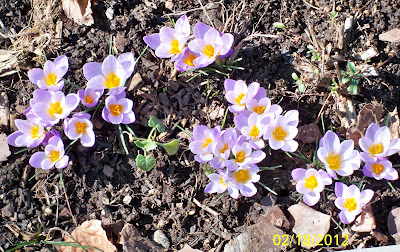I've always been a huge fan of Victory Garden memorabilia. Twice during the first half of the last century it was your civic duty to plant and raise vegetables. During WW1 they were called War Gardens and the term Victory Garden was adopted during WW2. Over the years I have acquired a few pieces of this memorabilia. The Victory Garden Handbook has many plans, one for a miniature Victory Garden, shown below. The garden is 11ft x 15ft, easily adapted to my space of 9ft x 16ft.
I've always wanted to plant a Victory Garden based on this plan using vintage varieties from that era. Maybe next year for the vintage varieties...
Below is how the plan evolved.
 |
| From the Victory Garden Handbook |
 |
| Spring- Adapted to the garden area. |
There is too much space for cabbage, and I really could use a path down the center to adapt the plan to wide rows.
 |
| Summer- Adapted to the garden area. |
There is too much space for turnips, and I really could use a path down the center to adapt the plan to wide rows.
 |
| Spring 2- Adding a path in the center. |
Adding a path down the center and the first tweak of the crops.
 |
| Summer 2- Adding a path in the center. |
Adding a path down the center.
 |
| Spring 3- Tweaking the crops to suit my needs. |
I don't use Swiss chard, it is replaced by snow peas. There is a lot of unused space for the tomatoes and peppers. I can now add arugula, more lettuce and Thai greens. We don;t eat radishes so they are replaced with spinach and the onions are replaced with shallots.
 |
| Summer 3- Tweaking the crops to suit my needs. |
Fro summer there are more bush beans, turnips replaced with summer lettuce, kale and collards have been added.
The only thing missing is space for pole beans, squash and cucumbers. The area has a 6ft fence on two sides so I may be able to squeeze in the cucumbers and pole beans. A butternut squash or two may work at the base of the tomatoes.
Seventy years later, the original plan seems to have been remained useful.
I may use this plan, or the one I previously wrote about, or another one I'm currently developing based on a real Potager plan. One of the great things about gardening is you are always dreaming...




















